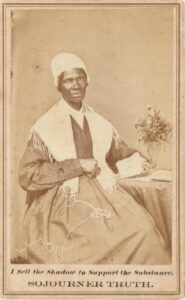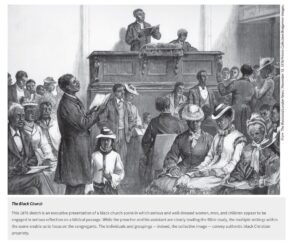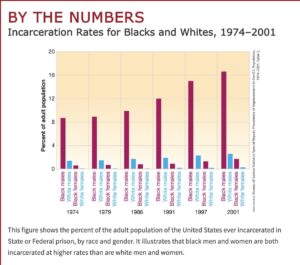Zoe Harrison
Dr. Miller
African American History
12 May 2023
Dr. Mae Jemison: Defying the Monolithic Identity
of African American Women What comes to mind when you think of a white person? The answer to that question is as multifaceted as the individuals that make up that group. White people can be lawyers, musicians, politicians, drug addicts, or even murderers. Yet when we think of a Black person, the words that often come to mind are much more limited in scope, and frequently negative in connotation. Terms like “drug dealer,” “gangster,” “homeless,” and “janitor” are all too common. This begs the question: why are Black people so often bound to such negative stereotypes? Who is responsible for perpetuating them? Do Black individuals simply fail to work hard enough to succeed in society, or have they been historically subjected to stereotypes that have been used to justify systemic oppression? The reality is that these stereotypes are not only harmful, but they are also inaccurate. The creation of the monolithic Black person erases the diverse experiences of individuals within this community, and oppresses those who do fit into these negative stereotypes. Furthermore, Black people are often underrepresented in positions of power and influence, which can limit their ability to challenge these imposed identities. However, as we move further into the age of information and modernity, there has been an increase in representation and examples of Black individuals who have defied stereotypes and succeeded in spaces where they are not commonly seen. One of these individuals is Dr. Mae Jemison, who has excelled and broken barriers in predominantly white, male-dominated fields. Her profound accomplishments highlight the resilience, strength, and nuanced identity of Black individuals, inspiring others to strive for excellence.
A month ago, Dr. Mae Jemison came to the University of San Diego to be interviewed. The interviewer asked her questions about her childhood, her education, her success, and projects that are in progress. With wit and humor, Jemison answered these questions and relayed great advice to the audience. Currently, Jemison is working on a project called 100 Year Starship which has the capabilities for human interstellar travel in the next 50 years. This project is inclusive across ethnicities but also disciplines. Jemison remarks” “we cant do something called interstellar without taking a range of human experience”.
Dr Mae Jemison is an example of Black excellence. She challenges the status quo for Black women. Throughout history, the depiction of Black women has been manipulated and transformed in order to serve the changing needs and objectives of white society. In a society where white people are the “dominant race”, they ultimately get to decide people’s group memberships. Meaning, the assignment of an individual into a group based on characteristics that are specific to that group in accordance with widely held intersubjective definitions. When a person gets to decide who and what another race is, a trans-generational wave of self-consciousness and insecurity ultimately prevails. Group consciousness is how people see themselves in contrast or according to how the world sees them. In the article, “Re(claiming) Subjectivity and Transforming the Politics of SIlence through the Search for Wholeness in “Push” by Sapphire”, Silvia Pilar Borrego Castro discusses a similar concept called post-positivist realism which “involves an interrogation of the epistemic and affective consequences of our social location of historically learned thinking and feeling” (Castro 148). Post positivism relates to the depiction of Black women because it explores the anthropological factors that define and shape the black female identity. With its focus on “identity, agency, and decolonization” post-positivism becomes a fundamental tool to analyze expressions of African Americans (Casto 148). For Black people, their self-perception may contradict that of their racial counterparts’ perception. Or even worse, the widely held beliefs of their racial counterparts may convince them of their own identity. Black women face the challenge of not being able to control their perception from the outside world, but rather have stereotypes forced upon them. Back in slave times, the depiction of women was docile and obedient, because their slave owners needed to push that narrative upon them in order to keep peace and avoid uprising (White, Bay, Martin Jr.) However, during antebellum times, the black depiction shifted from docile to brute. Subservient to aggressive. They were seen as “an offense to civilization” which then gave way for their white counterparts to enforce strict laws and black codes against them (White, Bay, Martin Jr). The idea of the “mammy” which is used to describe a stereotype of Black women who worked as domestic servants. The mammy was seen as unfeminine and rough. Demanding and ugly. Barbaric even. Throughout all transformations of Black female identity, Black women find themselves at the bottom of the totem pole, and unfortunately have to typically jump through many hoops to be as successful as their white peers. Identity is an extremely important access to success. When one doesn’t feel supported by society or confident in their ability to achieve, they face barriers that limit their achievements. Thankfully, Dr. Mae Jemison had a family that supported her interests and made her feel confident enough in herself to achieve great things.
Ultimately, the perception of Black people, and specifically Black women is completely socially constructed. If we peel back the layers of history, it’s quite ironic that Black women can have not only different stereotypes, but completely contradictory ones. Why does the dominant white society get to decide black identity, and how does this impact their success and access to society?
Dr. Mae Jemison’s experience and Borrego’s article reveal that knowledge is the greatest way to assert dominance, empower oneself, and understand the systems that limit us. The pursuit of knowledge is an important theme in the novel Push. The premise of the novel surrounds the main character Sapphire who suffers from abuse and incestual rape from her parents. Sapphire is diminished to a “voiceless victim” (Castro 150) but learns to read and write which helps her process and heal from her trauma. According to Francis Kazemek, “literacy is an ethical endeavor that has as its goal the liberation of people for intelligent, meaningful, and humane action upon the world” (Kazemek qtd in Castro). Similarly to Sapphire, Dr. Mae Jemison uses knowledge as a tool to propel her success in many different fields. At sixteen years old she went to Stanford university and later on went to medical school. She then joined the Peace Corps, using her medical skills to help underprivileged and communities in distress. Jemison has been many things in her lifetime. A teacher, traveler, dancer, astronaut, and doctor. Her knowledge became her superpower and allowed her to advance in society. Through hard work and extreme dedication, Jemison defied the stereotypical standard for Black success. Jemison made a profound comment during her seminar at USD. She said “You have to believe that you have the right to be someplace.” There is such an importance of empowerment among marginalized communities. Believing that you have something to contribute is the key foundation to defying stereotypes and oppression.
Dr. Mae Jemison defies the monolith identity of African American women through her multifaceted interests and professions. She does not squeeze herself into the category of “a Black scientist” or “a Black astronaut” or “a Black artist”. She realizes that her passions and talents are interconnected and mutually enriching. Sadly, in a world still plagued by racism, Black individuals are expected to fit into a box. Typically this “box” is a limiting one. In her seminar, Jemison made a point that “all of the things you learn can interplay” and we need not put ourselves in a box. Black people are taught throughout history that we cannot be many things like our white counterparts, but Dr. Mae Jemison is an example of a woman with various talents, interests, and successes. The support of her family, and academic professionals excelled her career and gave her the confidence in herself needed to be as successful as she is. Overall, while Black people are not inherently more bound to monolithic identities, the ongoing effects of racism and discrimination in many societies can contribute to the erasure of individual experiences and the reinforcement of harmful stereotypes and attitudes.
Works Cited
Alexander, Kerri Lee. Mae Jemison Biography, 2018, www.womenshistory.org/education-resources/biographies/mae-jemison.
Borrego, Silvia Pilar Castro. “Re(Claiming) Subjectivity and Transforming the Politics of
Silence through the Search for Wholeness in ‘Push’ by Sapphire / Re(Clamando) La
Subjectividad y Tarnsformando Las Políticas Silenciadoras a Través de La Búsqueda de
La Unidad Ontológia En La Novela ‘Push’, de Sapphire.” Atlantis, vol. 36, no. 2, 2014,
- 147–59. JSTOR, http://www.jstor.org/stable/43486665. Accessed 12 May 2023.
White, Deborah Gray, et al. Freedom on My Mind: A History of African Americans with
Documents. 3rd ed., Bedford/St. Martin’s, 2013.



